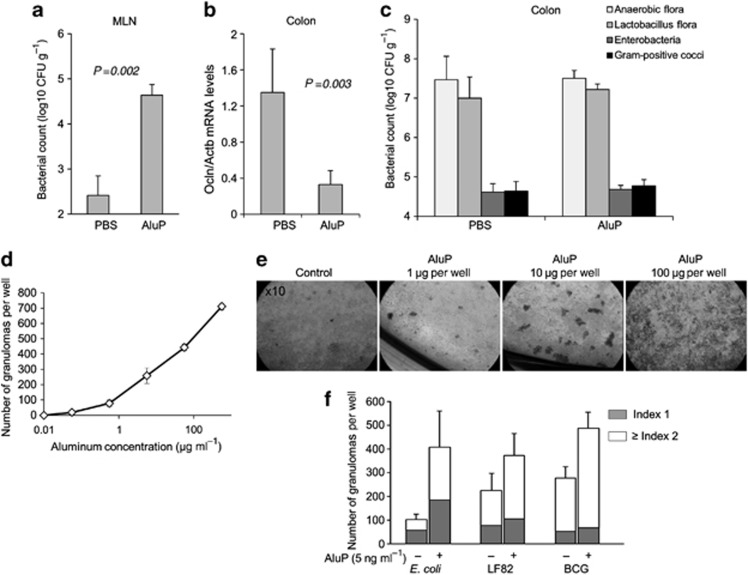Figure 10.
Aluminum alters intestinal barrier integrity and induces granuloma formation. C57BL6 mice were fed with aluminum phosphate (AluP) (1.5 mg of Al element kg−1 per day, n=9) or phosphate buffer saline (PBS) (n=4) for 4 weeks. Bacterial counts in mesenteric lymph nodes (MLN) and colon were determined after 4 weeks. (a) Bacterial counts in MLN were significantly higher in aluminum-treated mice than in PBS-treated mice. (b) RT-qPCR assay of homogenized colons showed a decrease in Ocln mRNA in mice treated with aluminum as compared with PBS-treated mice. (c) Bacterial count of specific strains in the colonic mucosa showed no difference between aluminum-treated and PBS-treated mice. (d) Human peripheral blood mononuclear cells (PBMCs) were incubated for 4 days with increasing doses of AluP (from 1 to 100 μg of Al element per well; 1.5 ml medium per well). Quantitative analysis of the number of granulomas showed a dose-dependent enhancement of granuloma number in response to aluminum. (e) Representative light microscopy pictures ( × 10) of the culture wells after 4 days of reaction revealed large multicellullar structures (granulomas) in the presence of aluminum. (f) Human PBMCs were incubated for 5 days with non-pathogenic E. coli K-12 strain DH5α, AIEC strain LF82 or BCG, alone or in the presence of a low dose of aluminum (5 ng of Al element ml−1). The number of granulomas according to their size (Index 1, small size, Index 2, big size) was counted. CFU, colony forming unit.

